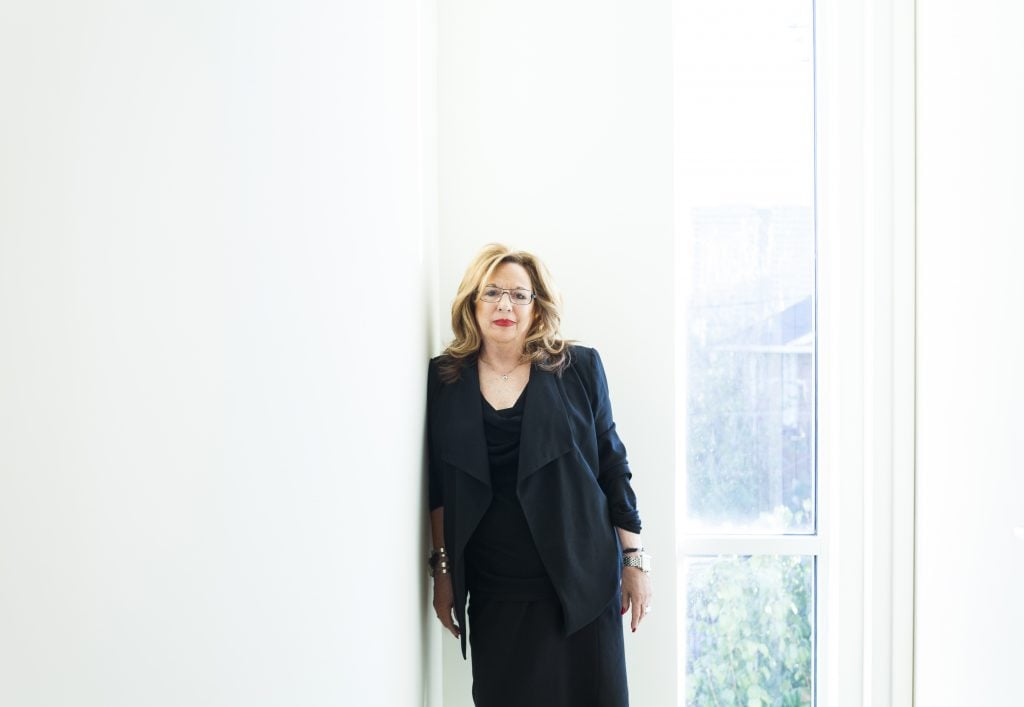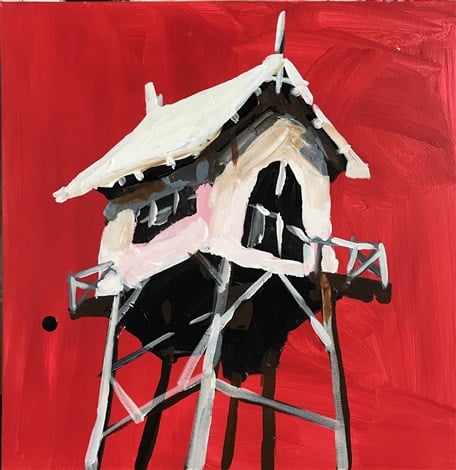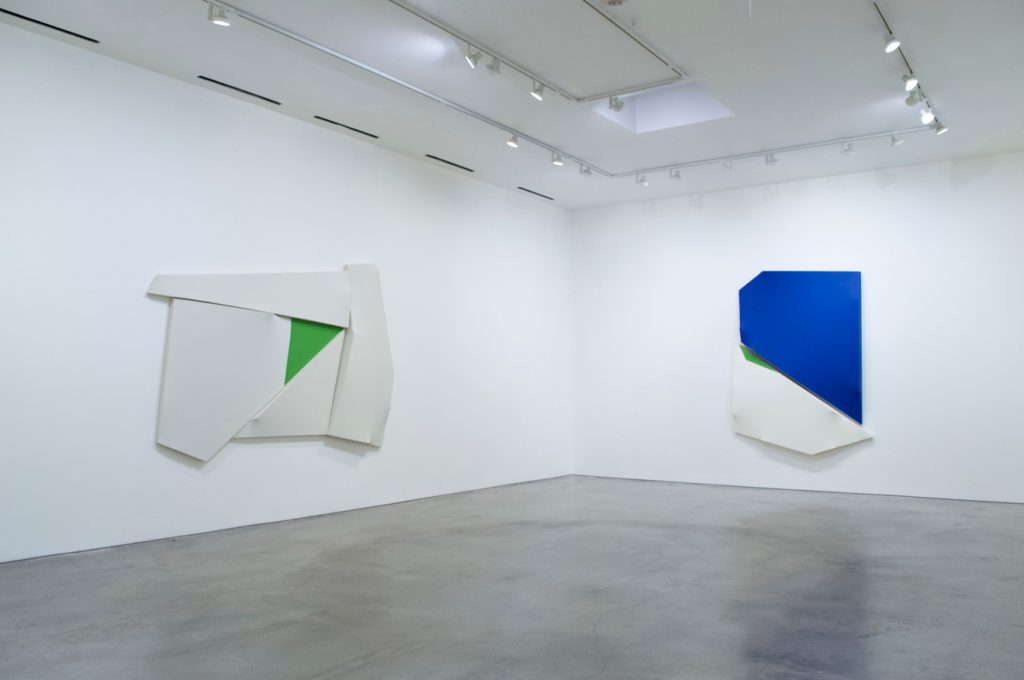Veteran Houston Dealer Barbara Davis Reflects on 40 Years in the Art World


Artnet Gallery Network

For nearly forty years—39 and some months, to be precise—gallerist Barbara Davis has used her astute eye to bring the best of what the contemporary art world has to offer to Houston. During the 1980s and ‘90s, she hosted exhibitions with works by Joseph Beuys, Kiki Smith, Jonathan Borofsky, Allan McCollum, and Gilbert & George at her eponymous gallery. These artists’ works had rarely if ever been shown in the city, and not everyone was ready. Still, she says, she wasn’t deterred, and many of the artists she has shown have gone on to build esteemed international reputations.
Complicated international exhibitions haven’t intimidated her either. Over the years, Davis has orchestrated international shows of artists, including those from the New Leipzig School and Beijing East Village.
Her aim, she said, has been to show artists who had something to say—even if they had yet to be embraced by art circles in New York or London. She famously gave Julie Mehretu her first commercial gallery show. And her risk-taking has earned her the esteem of colleagues: Barbara Davis Gallery was the first Houston gallery to show with Art Basel.
On the eve of her gallery’s fortieth anniversary, we caught up with Davis, who talked about how the art world has changed her life and the artists she’s loving now.
As a dealer, you’ve taken a particularly active role in educating would-be collectors about the nuts-and-bolts of collecting—pricing, for instance—but also about developing ways of seeing. Why have you taken up that mantle?
It comes from my personal experiences in the art world The art world came to me a little later in life, as an adult. I really wasn’t exposed to museums and galleries in my teenage years. But when I came to it, I found it to be a very magical world. Art became a real passion for me and a lifestyle. When you become visual and visually attuned to your surroundings, you see the world differently and can see beauty everywhere. The art world is also the people you meet, the conversations you have, and for me, it has been incredibly rewarding.
So for people who are inquisitive, there is a journey in which you can have great and challenging experiences through art. I want to bring people into this experience and to move beyond a kind of shopping mindset, and introduce this to people that are starting to buy art. You’re not born with an eye. You develop the eye, and then get in touch with the essence of what you are looking at.
What do you look for in an artwork?
An artist gives you another way of experiencing a subject—the essence of that subject rather than the entity itself. Like a great piece of music, an artwork can transport you to another place and time. True artists are visionaries.
I look for art that possesses content, that isn’t empty but expands the mind. As your eye develops, you absolutely can tell the difference immediately—if there is nothing being said or if the artist is taking you to all these different places. Early in collecting, many people just go with things that they feel comfortable with. It takes a level of vulnerability to be open to experiencing an artwork. But art can open up a new world if you’re willing to go there, and everyone is looking for magic in their lives.
In a room full of Agnes Martin paintings, some people will just see a room full of white paintings. But someone else, once they get in touch with it, can have an experience of a feeling of God
Can anyone develop an eye?
There has to be some sensitivity there, but I do think many people could if they’d be willing to access their emotions. I mean, you could go to art school for many, many years, but still, you can’t learn the magic of certain artists who have this gift to be able to reveal a feeling. It’s just like a great singer, in that some of it is beyond teaching, but some of what is technical can be learned and developed. Some of it is instinct though.

Mie Olise Kjærgaard, Great Escape House (2019). Courtesy of Barbara Davis Gallery.
Right now you’re showing the work of Danish artist Mie Olise Kjærgaard, who creates these evocative paintings of man-made constructions kind of teetering on the brink of collapse. The images are beautiful but also kind of dystopian. Can you tell me a little bit about her work?
I was in London when I first heard about her work. She was very, very young, just starting out, but she’d been a finalist in a Saatchi “Sensations” exhibition, and she was living in London at the time. I don’t wait months and years—I just called her and asked to see her work. I guess if I’ve got a gift, it’s that I’ve got a pretty good eye. I could sense that she was the real deal—she was doing something fresh and had her own identity. She’d grown up on an island off of Copenhagen and her father was a wooden shipbuilder. She had this romantic quality, but she was smart, too—an amazing painter who could articulate her subject and ideas, which is a great combination.
Obviously, there are all these other components that go into becoming famous as an artist, but it’s not that often you find an artist saying something new. Someone who feels like they need to create each day or they don’t feel complete. That was more than 12 years ago, and Mies is getting some museum show now. She is still pushing herself ahead in her painting.
Speaking of fame, you gave Julie Mehretu her first commercial gallery show. What has it been like to watch her career?
Julie did a two-year program called the CORE Program at the Museum of Fine Arts here in Houston in the late 1990s where I first saw her work. There was something absolutely there with her, even in the beginning, and I took her work to London with me, took it to White Cube, and showed it to them.
It’s really amazing what’s happening now. In such a short time, she’s being viewed as a living part of our history.
Are there any other artists you showed early on who have skyrocketed?
Shazhia Sikander was also a CORE fellow who then had a show with me. She made her first wall drawing at the gallery, I believe.

Installation view “Eduardo Portillo: Flying Fast Forward” 2020. Courtesy of Barbara Davis Gallery.
What other artists are you excited about that you’re working with now?
Right now we have an exhibition up of works by Eduardo Portillo. He’s a fascinating artist, whose works are somewhere between painting and sculpture, filled with life.
What do you keep in mind as a gallerist and a dealer?
My goal is to exhibit artists whose work is compelling, smart, and individual and also to convey my personal experiences in the art world hoping they will embrace the journey.
After forty years, do you think you’ll ever get tired of the art world?
It’s still as exciting to me as it was the day I started. I never had a passion before discovering the contemporary art world. I don’t think anything could replace this.
Certainly not money. I mean, everyone wants to live decently, but I’m not driven by that. It’s much deeper than that. It really is.
Learn more about Barbara Davis Gallery here.